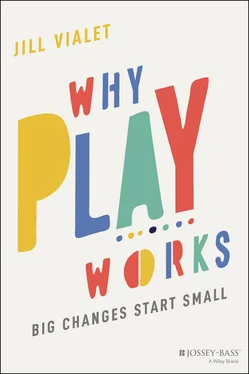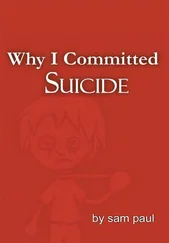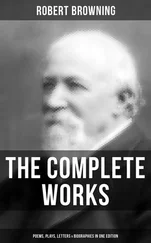
Copyright © 2021 by John Wiley & Sons, Inc. All rights reserved.
Published by John Wiley & Sons, Inc., Hoboken, New Jersey.
Published simultaneously in Canada.
No part of this publication may be reproduced, stored in a retrieval system, or transmitted in any form or by any means, electronic, mechanical, photocopying, recording, scanning, or otherwise, except as permitted under Section 107 or 108 of the 1976 United States Copyright Act, without either the prior written permission of the Publisher, or authorization through payment of the appropriate per‐copy fee to the Copyright Clearance Center, Inc., 222 Rosewood Drive, Danvers, MA 01923, (978) 750‐8400, fax (978) 750‐4470, or on the web at www.copyright.com. Requests to the Publisher for permission should be addressed to the Permissions Department, John Wiley & Sons, Inc., 111 River Street, Hoboken, NJ 07030, (201) 748‐6011, fax (201) 748‐6008, or online at http://www.wiley.com/go/permission.
Limit of Liability/Disclaimer of Warranty: While the publisher and author have used their best efforts in preparing this book, they make no representations or warranties with respect to the accuracy or completeness of the contents of this book and specifically disclaim any implied warranties of merchantability or fitness for a particular purpose. No warranty may be created or extended by sales representatives or written sales materials. The advice and strategies contained herein may not be suitable for your situation. You should consult with a professional where appropriate. Neither the publisher nor author shall be liable for any loss of profit or any other commercial damages, including but not limited to special, incidental, consequential, or other damages.
For general information on our other products and services or for technical support, please contact our Customer Care Department within the United States at (800) 762‐2974, outside the United States at (317) 572‐3993 or fax (317) 572‐4002.
Wiley also publishes its books in a variety of electronic formats. Some content that appears in print may not be available in electronic formats. For more information about Wiley products, visit our web site at www.wiley.com.
Library of Congress Cataloging‐in‐Publication Data
Names: Vialet, Jill, author.
Title: Why play works : big changes start small / Jill Vialet.
Description: [San Francisco] : Jossey‐Bass, [2021] | Includes index.
Identifiers: LCCN 2021027139 (print) | LCCN 2021027140 (ebook) | ISBN 9781119774549 (paperback) | ISBN 9781119779124 (adobe pdf) | ISBN 9781119775508 (epub)
Subjects: LCSH: Play. | Socialization. | School recess breaks.
Classification: LCC LB1137 .V53 2021 (print) | LCC LB1137 (ebook) | DDC 306.4/81—dc23
LC record available at https://lccn.loc.gov/2021027139
LC ebook record available at https://lccn.loc.gov/2021027140
Cover image: © Getty Images | Passionartist
Cover design: Paul McCarthy
In 1995 I was running a small local nonprofit organization called the Museum of Children's Art (mocha) in Oakland, California. We had a number of partnerships with schools—basically artist residencies—and one of them was with a local school named Santa Fe Elementary where Mrs. Peyton was the principal.
Although much of the world has changed since I was a kid, school offices have not. They are typically busy hives of activity, with a counter that keeps visitors from coming in too deep, two desks for the school secretary and another administrative helper, and an inner sanctum—the principal's office—just off to one side. The Santa Fe office was set up just like this, and I recall sitting in one of the chairs generally reserved for students anticipating punishment up against the front wall, waiting for Mrs. Peyton.
The meeting had been scheduled for just after the lunch hour, and Mrs. Peyton was running late. After about 20 minutes, Mrs. Peyton emerged followed by three little boys. The young men seemed about nine or ten years old, and they all looked absolutely miserable. Mrs. Peyton, in turn, was furious. She ushered the boys to the school secretary, conveyed some instructions about contacting their families and then marched back into her office, stopping briefly to signal that I should follow.
Once in the office, I sat in the chair opposite hers and, before I had fully settled in, Mrs. Peyton launched into the litany of reasons that, basically, recess was hell. The teachers found every reason to be anywhere but the playground, the students didn't know how to get a game going or to keep a game going, the conflicts that arose on the playground followed the students back into the classroom, and, most frustratingly, these same three boys kept getting into trouble. She was building up steam as she went, and the description of the scene that she painted sounded hopeless. But the thing I remember most clearly was when she said, “And the worst part is that, because of recess, these boys are starting to believe that they're bad kids. These are not bad kids.”
I hadn't said anything yet, but I must have nodded or signaled some sort of understanding because Mrs. Peyton took a breath and asked, “Can't you do something? Can you help fix recess?”
Initially, I was taken aback by the question. After all, I was there in her office to talk about the artist residency program. But the question got me thinking, and I immediately flashed on my own childhood growing up in Washington, DC, and afternoons spent at the Macomb Street playground. There was a guy who worked for the DC Parks and Rec Department named Clarence who was responsible for all the assorted activities that happened at the park. Mostly I remember him keeping the center open and coaching various teams—basketball and flag football most distinctly. There was the occasional DC Metro spelling bee that some of the kids participated in, and I think there must have been arts and crafts, but generally speaking we just hung out until it was time to go home for dinner.
It's not insignificant that I so vividly recall the basketball and football. This was the 1970s and Title IX had passed in 1972, so although there was a growing shift in attitudes about making opportunities available to women and girls, from my young perspective, it largely meant that I got to play with the boys.
When Mrs. Peyton asked if I might “do something,” my immediate thought was how Clarence had always made sure that I got in the game. I was a good athlete and although Clarence didn't make it a big deal, I had a vague sense that he had preemptively squashed any resistance that might have arisen to my participation as a girl. And so, when Mrs. Peyton asked, “Can't you do something? Can you help fix recess?” the first thing I thought was: I could make it possible for every kid to have a Clarence.
That was 25 years ago. Since then I've learned a lot about how to make it possible for kids “to have a Clarence.” I've also learned a lot about the power of play, especially when someone like Clarence is making it accessible. The organization I founded back in 1996, originally called Sports4Kids and now called Playworks, works through direct service and more indirectly through training and online support. Our original model, which we now refer to as Coach, involves a full‐time staffperson (the Clarence) placed at an elementary school and overseeing four main components: Recess, Class Gametime, the Junior Coach Leadership Program, and Leagues. We'll go a little more into each of these, but here's a little context.
Читать дальше













